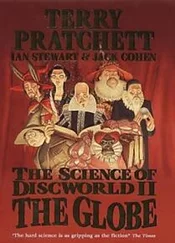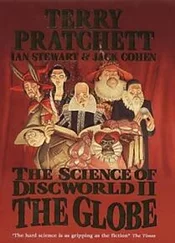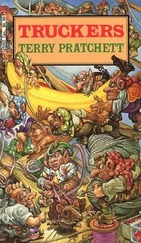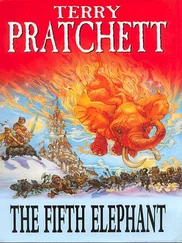The latest narrow band of worlds hosting complex life, the Bonsai Belt, had terminated at around Earth West 190,000,000, and they found themselves drifting once more over endless purple scum worlds.
Earth West 200,000,000 was another numerical milestone that Maggie used as a chance for a couple of days’ rest, recuperation, systems check. But the world itself was one of another band blighted by supercontinents, one hemisphere a vast bowl of Mars-red desert, the other a featureless mask of lifeless ocean. The oxygen levels were low here, and she couldn’t in all conscience sanction any shore parties, which did nothing to help morale. Then, beyond Earth West 210,000,000, oxygen levels once more collapsed entirely. This persisted even though, after around West 220,000,000, the supercontinent features abruptly fractured.
And beyond that point, the crews of the airships Armstrong and Cernan encountered increasingly unfamiliar and difficult Earths.
There were a lot more Gaps, for one thing, holes in the Long Earth that had to be cautiously, but hastily, traversed. Worlds with very exotic biota. Such as a thin band of worlds dominated by tremendous trees, trees whose slim trunks towered above the twains, and Gerry Hemingway’s best guess was that they might be three miles tall, their canopies – wonderfully, impossibly – higher than most mountains . . .
There were worlds where the atmosphere was much thicker than on the Datum, or much thinner. The crews had to battle with the buoyancy of the ships in such unfamiliar airs, and the engineers fretted about corrosion by acidic gases, and the battering of ultraviolet from the unscreened sun.
There were worlds with one moon, bigger or smaller than the Datum’s, or many moons, or no moons at all.
There were even worlds where the gravity was different. On the low-weight worlds the ships floated over landscapes that generally looked more or less like the Mars of the Datum sky, with thin air and huge mountains and canyons that could span continents. In the partial gravity the airships were difficult to handle, the crew played jumping games, and the trolls hooted in dismay, tumbling. On other worlds, though, the gravity was stronger than on the Datum. Under thick blankets of atmosphere, winds scoured landscapes bare of any life but stunted-looking trees. The ships, their buoyancy inadequate, were pulled towards the ground, and if they lingered any length of time the crew complained that it felt as if packs of rocks had been loaded on their backs, like a punishment-detail training exercise.
Hemingway had some ideas about what was going on. At the root of Earth’s formation was violence, as a cloud of dust spinning around a young sun had collapsed into rocks that smashed each other to pieces – or, sometimes, collided to form bigger rocks, which in turn formed bigger rocks yet . . . Emerging from this chaos, Datum Earth with its moon had in the end been born as a result of a final titanic head-on collision between two young worlds, one Earth-sized, the other the size of Mars. It was all a series of accidents; it could have turned out lots of other ways. And now Maggie was finding sheaves of worlds so remote from her own that even that primordial sculpting had turned out differently.
Gerry wondered what this was telling them about the nature of the Long Earth, the relation of these parallel worlds to each other, and stepping.
‘How far away from the Datum model in terms of Earth’s formation can you go, before it’s no longer Earth at all? We know that even if an Earth is missing altogether you can step into the Gap remaining, but at least an Earth once existed there. But what if, for instance, an Earth hadn’t congealed at all – what if we found a cloud of asteroids kept from aggregating by some nearby gas giant, say? Is that where the Long Earth would terminate at last, and no more stepping would be possible?’
Well, they hit no such terminal condition on this jaunt. But to Maggie’s mind the most remarkable Earth of all was West 247,830,855.
This Earth was not a planet at all, but a moon : a mere moon, of a greater body. The moon-Earth was smaller than the Datum, hotter, the air denser – more geologically active, Gerry speculated, because of tidal squeezing by its big primary world. ‘It’s a mutant cross between Earth and Io, moon of Jupiter,’ he said gleefully. Yet even here they found life, and complex life at that. One drone returned a striking image of what looked like pterodactyls to Maggie, huge bony flyers swooping around an active volcano.
And the sky was dominated by the primary, a nameless world that had no counterpart in the solar system of Datum Earth. This too was a rocky world, more like Earth than a gas giant like Jupiter, say, but many times more massive than Earth itself. It was a big angry ball that hung unmoving in the sky, though the sun wheeled beyond it; the Earth-moon was so close to the primary that it was tidally locked, with one face turned forever to the giant world. And as the primary itself turned it revealed sprawling continents, tremendous oceans, dense, smoggy air, and flaring volcanoes to match the activity on its Earth-moon.
They stayed a full twenty-four hours to study this object. Maggie thought the crew took more amateur photographs of this world than of any other sight they’d come across, save only the wreck of the Armstrong I .
And, most tantalizing of all, on the primary’s darkened hemisphere, they saw lights. Maybe only campfires, but still . . .
‘It’s maddening,’ Maggie said to Mac. ‘We’d need a spaceship to get over there. We stepped a quarter of a billion worlds to get here. And now we can’t cross a few thousand miles to go see all that.’
Mac only smiled. ‘We have to leave something for the future to achieve. Damn, this bottle of Auld is empty. This ship is running out of single malt, just like most other essential supplies. I think I have an emergency ration in my cabin . . .’
Bowing to a petition by the scientists, and some of the more adventurous crew, Maggie left a small party behind to explore this Earth-moon further. Then they moved on.
ON MAY 24, 2045, four months after leaving the Low Earths, the US Navy airships Armstrong and Cernan reached their nominal target of Earth West 250,000,000.
The world itself turned out to be unprepossessing, barren, ordinary, but at least you could land on it with a facemask, walk around a little. The crew built a stone cairn, affixed a bronze plaque, set up a Stars and Stripes, took a few photographs. When Wu Yue-Sai showed images of a similar ceremony performed by the crews of the Zheng He and Liu Yang , who had reached Earth East Twenty Million, they built the cairn up a bit to make sure it was bigger than the Chinese one. The trolls looked out from the observation galleries – they weren’t about to wear facemasks to go outside – and sang a sweet barbershop-quartet kind of song, over and over as a round, that sounded as if it had been selected to celebrate the journey, about how it was mighty nice, a trip to paradise, with my baby on board . . .
Even Douglas Black came down to the surface, with his aide Philip at his side. At Maggie’s quiet order, while he was off the ship Mac was never more than a few yards from Black, with full medical kit to hand. Black looked around, smiled, chatted, and allowed himself to be photographed alongside the crew, but refused to do any more than that. This achievement was the crew’s, he said; he was only a passenger, cargo. He did collect a handful of the local dirt, and slipped it into a plastic bag: a mundane souvenir of an unprecedented journey. Maggie rather liked his lack of ostentation.
Читать дальше











